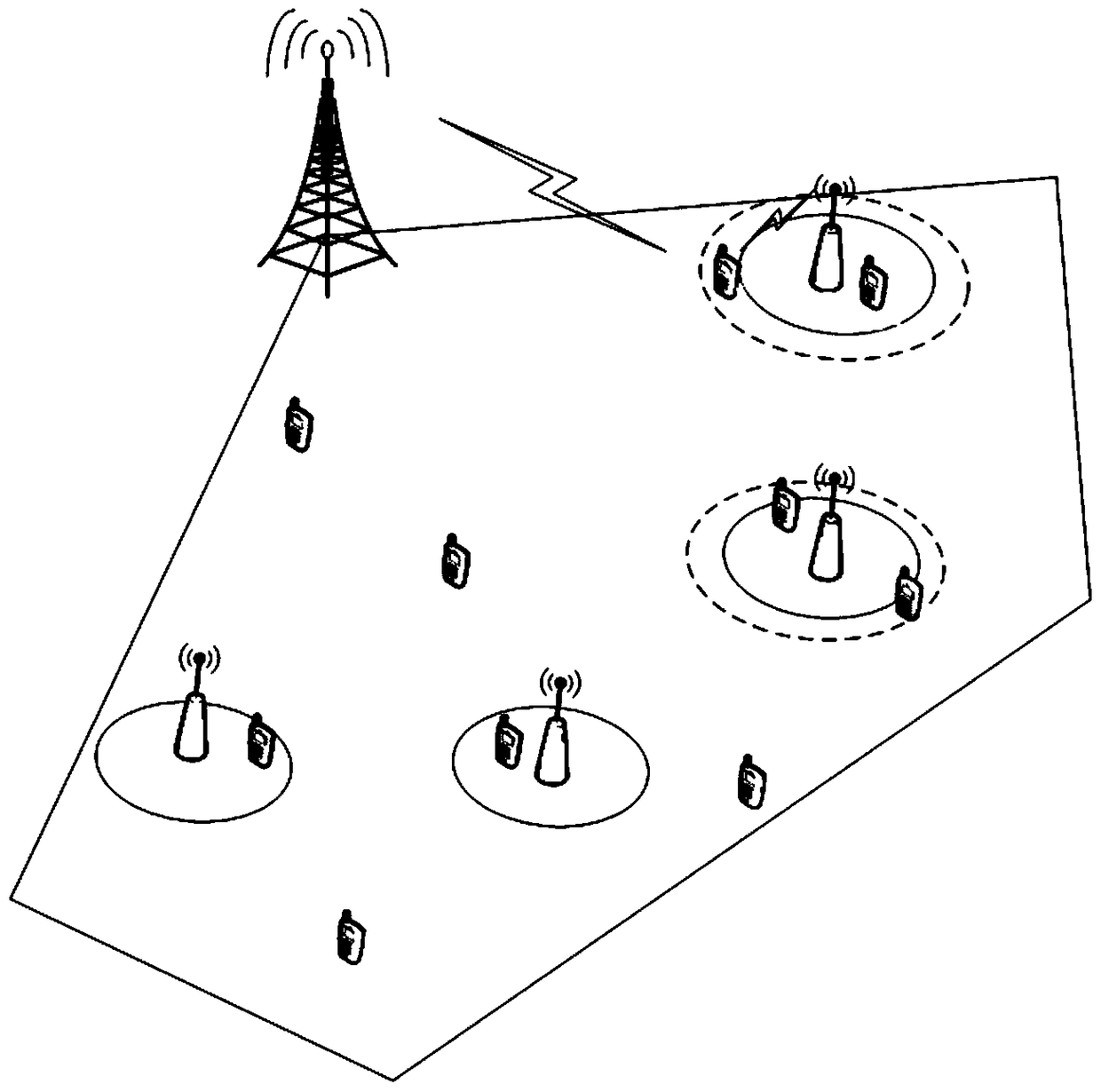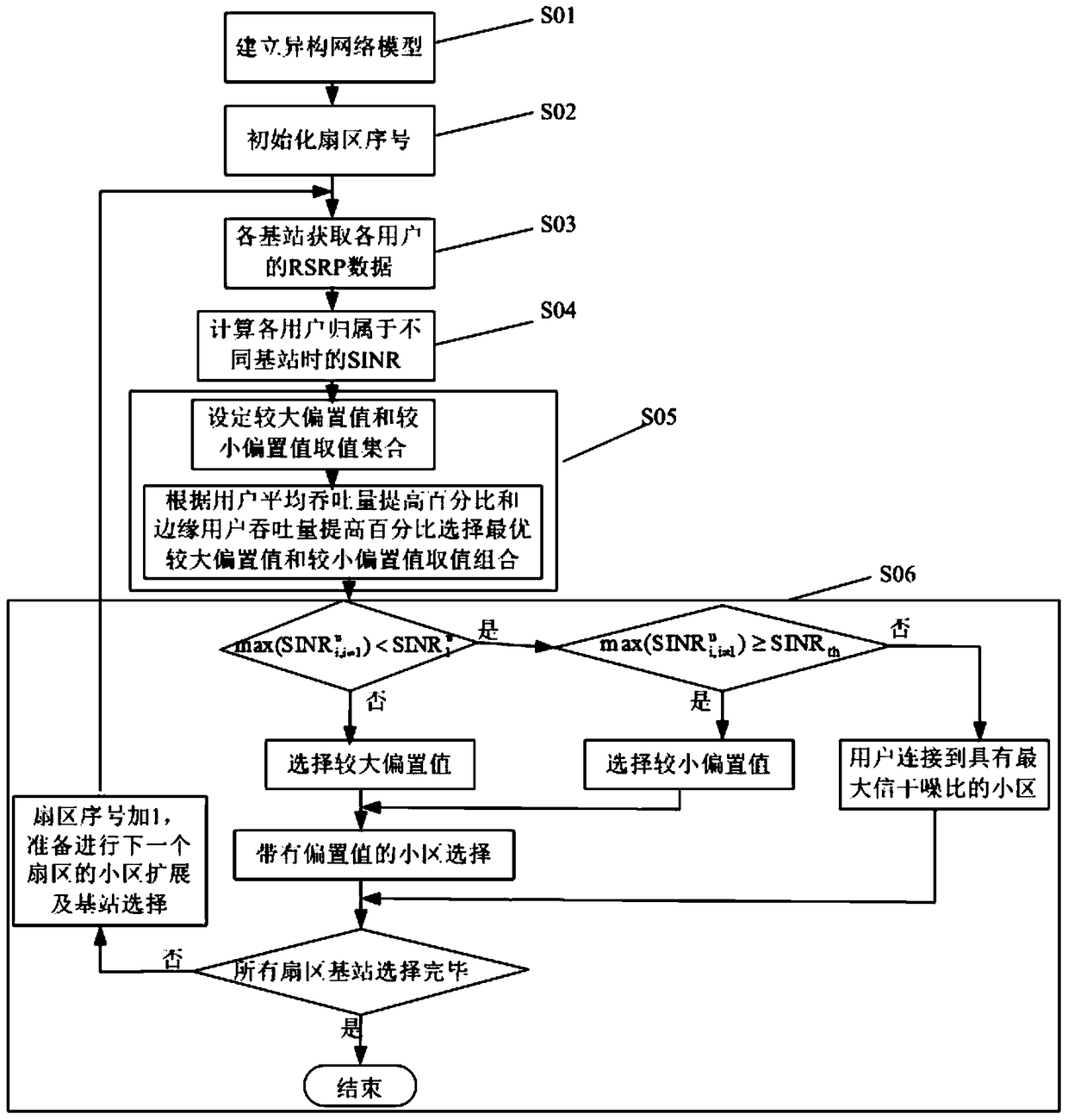A method for cell base station range extension and base station selection based on signal-to-interference-noise ratio
A technology for signal-to-interference-noise ratio and base station selection, which is applied in wireless communication, network traffic/resource management, electrical components, etc., and can solve the problems of users being unable to communicate and guaranteeing the transmission rate of users at the cell edge.
- Summary
- Abstract
- Description
- Claims
- Application Information
AI Technical Summary
Problems solved by technology
Method used
Image
Examples
Embodiment
[0059] like figure 1 The macro base station-pico base station heterogeneous network model is shown. The macro base station has a 3-sector antenna structure. Considering the user characteristics at the edge of the macro cell, according to 3GPP Release 11, the pico base station is set at a distance of 0.6 times the radius of the macro cell from the macro base station. Randomly evenly distributed in the sector. A sector is regarded as an area, and base station selection for cell range expansion and user connection is carried out by area. In this embodiment, the number of pico base stations in the considered sector is M=4, and the number of users is N=10. Using 3-sector antennas can form 360-degree full coverage on the horizontal plane, satisfying good coverage and traffic absorption. At the same time, the overlapping and coverage control of sectors is optimal, and it is convenient to implement cell splitting according to actual network requirements in the future. Add sectors. ...
PUM
 Login to View More
Login to View More Abstract
Description
Claims
Application Information
 Login to View More
Login to View More - R&D
- Intellectual Property
- Life Sciences
- Materials
- Tech Scout
- Unparalleled Data Quality
- Higher Quality Content
- 60% Fewer Hallucinations
Browse by: Latest US Patents, China's latest patents, Technical Efficacy Thesaurus, Application Domain, Technology Topic, Popular Technical Reports.
© 2025 PatSnap. All rights reserved.Legal|Privacy policy|Modern Slavery Act Transparency Statement|Sitemap|About US| Contact US: help@patsnap.com



